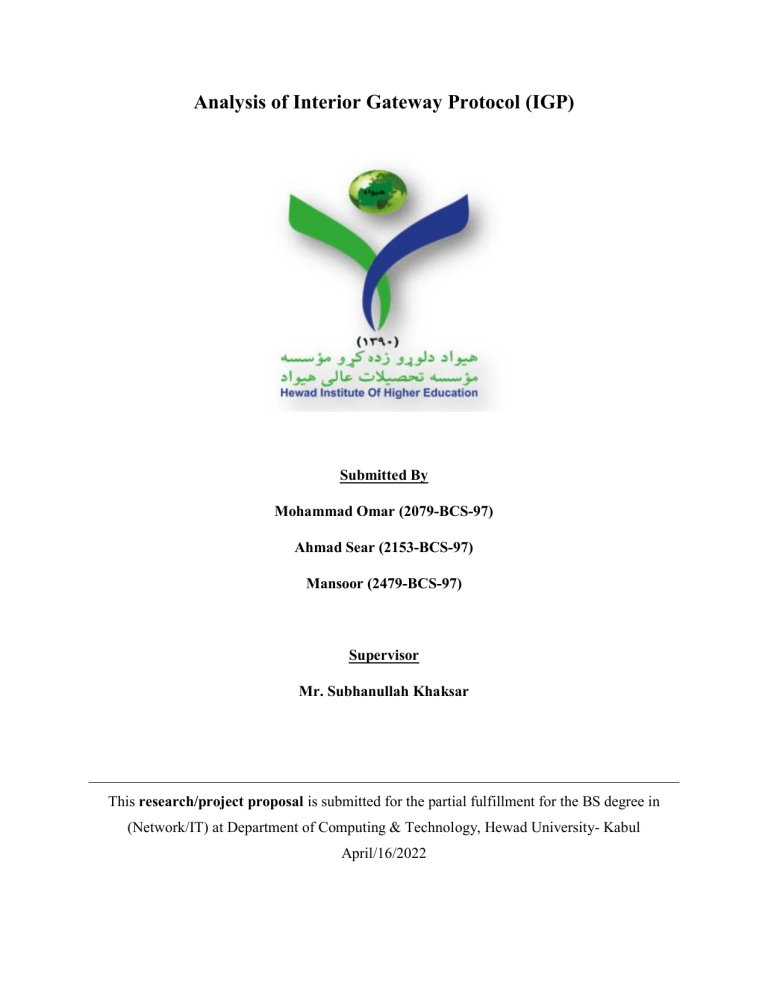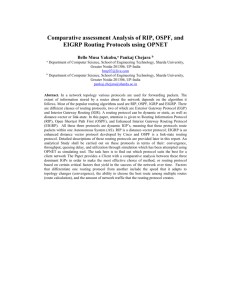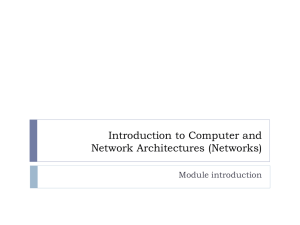
Analysis of Interior Gateway Protocol (IGP) Submitted By Mohammad Omar (2079-BCS-97) Ahmad Sear (2153-BCS-97) Mansoor (2479-BCS-97) Supervisor Mr. Subhanullah Khaksar This research/project proposal is submitted for the partial fulfillment for the BS degree in (Network/IT) at Department of Computing & Technology, Hewad University- Kabul April/16/2022 Table of Contents 1. Title of Project: ................................................................................................................... 3 2. Abstract: .............................................................................................................................. 3 3. Introduction:........................................................................................................................ 4 4. Problem statement:.............................................................................................................. 4 5. Proposed System: ................................................................................................................ 4 6. Project Design: .................................................................................................................... 5 a. Tools: ...................................................................................................................... 5 b. Work schedule: ....................................................................................................... 5 7. Conclusion: ......................................................................................................................... 6 8. References ........................................................................................................................... 6 1. Title of Project: Analysis of Interior Gateway Protocol (IGP) 2. Abstract: Routing is an important part of a network that allows the carriage of data over networks. Each routing protocol has different characteristics, performance, topology, and algorithms to ensure reliability. Data is moved across different networks and handled by different protocols inside and outside of different Autonomous Systems (AS). A reliable, secure, and fast network platform based on the correct configuration of protocols. In this project, we will perform redistribution between different types of networks to do analysis between them and evaluate the performance It's about finding the best combination of protocols for any complex situation to achieve fast and reliable connectivity. 3. Network Protocols Diagram 4. Introduction: Most networks you'll come across will only use one routing protocol, such as OSPF or EIGRP. Perhaps you will come across some old tiny networks that are still using RIP and need to be upgraded to OSPF or EIGRP. What if you own a company that uses OSPF and you recently purchased another company whose network uses EIGRP? We will likely have many routing protocols, in this case, we will need a way to communicate routing information between them. This is referred to as redistribution. We will investigate some of the problems we come across. What are our plans for our metrics? OSPF uses cost, while EIGRP uses K-values, the two are incompatible also Hop count is used by RIP to overcome the problems of this scenario we have to perform a practical analysis. Problem statement: To understand and analyze problems that affect communication between different protocols of IGP while redistribution. Here, in short, besides our existence of huge info about routing protocols, we want to independently have our own research. by the end of our analysis, we are very keen to reach a desirable conclusion and experience. Proposed System: All steps will be done with the help of networking virtual tools and real tools exists in our campus computer labs. Overviews of entire routing protocols A study of IGP Configuration of given scenarios Comparison using simulation and testing tools This study will increase general awareness of IT students about routing and efficient transmission and configuration of different network (autonomous). 5. Project Design: To analyze each protocol, we must create a virtual lab using simulations applications which will have two stages. A Lab Creation & Installation of Testing Tools B Testing and Sampling a). Tools: This is a very important part for application that which you using because it is really matter: Wire Shark & Solar Wind Applications for analyzations Networking Real & Virtual Labs (Packet Tracer and GNS3) To create labs Operating System We use Windows & Virtual Machines b). Work schedule: The creation of lab for testing and analyzation process is very important part for developing project that will be completed on time, this project will be start from 01 May 2022 and will be completed on the going below table. In the first week of our project, we will start literature review of previous findings then we follow the following scheduling for our project: Work schedule Apr Literature survey Data Collection May June July Aug Sep Software and Hardware Implementation & Analyzations Results, comparisons and thesis writing 6. Conclusion: Interior routing protocols like EIGRP and OSPF are broadly getting used along with the simple protocol RIP. In this project, we will have an evaluation and analyzation of routing protocols EIGRP and OSPF. The evaluation will be accomplished through using virtual testing software to examine each protocol. The performance will be measured on the premise of a few parameters that will be affects connectivity. 7. References 1-Leahy, Eric (2011). "EIGRP - Packets & Neighborships" Retrieved 18-11-2013, from http://ericleahy.com/index.php/eigrp-packets-neighborships/ 2- Kurose, J. F. and K. W. Ross (2010). Computer Networking: A Top-Down Approach. Boston, Pearson Education Inc. 3- Stretch, Jeremy (n.d.) "BGP" Retrieved 13-05-2014, from https://www.dnlab.se/pdf/BGP.pdf 4-Mirzahossein, K., et al. (2013). "Analysis of RIP, OSPF, and EIGRP Routing Protocols using OPNET." Simon Fraser University, School of Engineering Science. 5- McGrath, D., et al. (n.d.). Netsim: A distributed Network Simulation to Support Cyber Exercises, Institute for Security Technology Studies, Dartmouth College. 6- Waqas, A. (2009). An Empirical Study to Observe Route Recoverability Performance of Routing Protocols in Real-Time Communication





![Internetwork & TCP/IP [Opens in New Window]](http://s3.studylib.net/store/data/008490208_1-eaf10231908f97f1b47b18fe3c507663-300x300.png)

